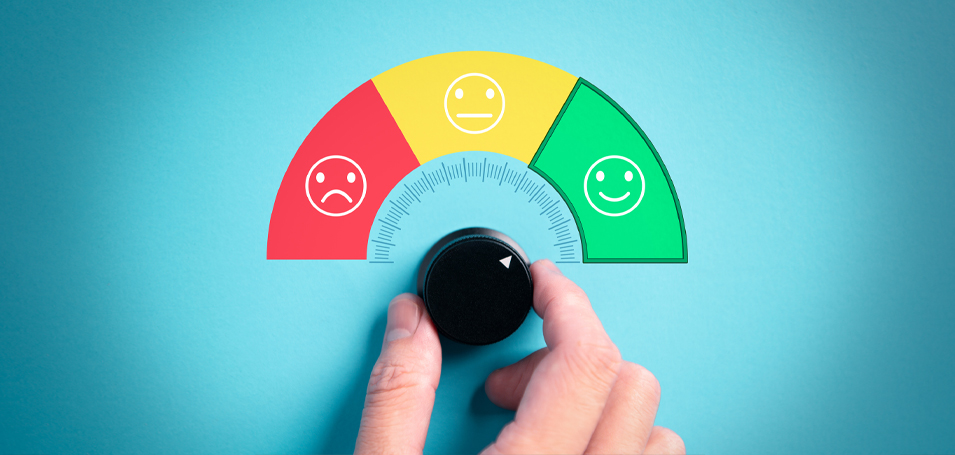The Value of Aligning Customer Education Goals to the C-suite
When you’re starting a customer education program, you want to make sure that you are tightly aligned with the organizational goals of your company. The chances are, your C-suite will be looking to you to prove the worth of customer education before you get additional buy-in, and the ROI they’ll be interested in will be how your program moves the needle on their specific organizational goals.
Adapted from my book, The Customer Education Playbook: How Leading Companies Engage, Convert and Retain Customers, this article will cover five of the most common business goals for today’s organizations, and how to align customer education with these goals to achieve success.
To learn which metrics to use to accurately and efficiently measure each of these goals, you can get your own copy of the book right here.
Goal 1: Improve Product Adoption
There are many types of product adoption challenges, from an overall lack of adoption altogether, to difficulties encouraging customers to utilize new features. If your organization is looking to improve product adoption, your customer education program should look for ways to combat this challenge head on.
Examples of product adoption challenges and their customer education solutions include;
- Empty state features: These are features that have zero uptake from the user base. One idea would be to create spotlight videos that highlight these features and their value.
- Lack of initial product adoption: Onboarding can be a huge product adoption challenge. Try building a prescriptive learning path that walks users through the first 30-90 days.
- Mistakes when adopting the product: Sometimes, users will adopt a product in the wrong way, and add friction to adoption. Customer Education teams could create a walkthrough or a tutorial for each new employee to reduce error.
Remember, your customers don’t want to hear you talk about your product. They have hired your product to do a specific job. What they want to know is how the product is going to support them in making their lives easier, so put that focus front and center.
Goal 2: Scale Customer Support
This is all about reducing the impact on the support team. As companies grow, the number of support tickets naturally grows alongside. Hiring more support agents is not a scalable solution, and you can’t keep doing that indefinitely. This is where customer education in the form of self-service education comes in.
There are so many kinds of self-serve content that your Customer Education teams can create. Think about help centers, online communities, FAQs, or documentation. These are all places the customer can go to get support, deflecting tickets from the CS team.
In many cases, they also provide a premium experience for the user. Today, for digital experiences, self-service is synonymous with speed, agility, flexibility, and satisfaction. For example, in an online community, I’ve seen first-hand how users can gain access to a wide group of experts 24/7, many of whom have niche knowledge about an organization’s product. This isn’t a resource users can access by sending in a support ticket.
Encourage your support reps to get the ball rolling by creating macros they can use to empower users to engage with self-service tools in the moment of need. This could be links to helpful resources, or recommendations for additional training content.
Goal 3: Maximize Customer Success
If your Customer Education team is tasked with maximizing Success, one exercise that I’ve found really impactful is to ask your Customer Success Managers to list the things that they say to 80% of their customers. These could be the standard onboarding questions that they answer, the company information they provide, or even the sales pitch repeated for new customers who join the account. This is taking up a whole lot of time in your CSMs day, and it’s repetitive work that they could probably recite in their sleep.
If you can create content that covers this 80%, then you’re leaving your CSMs with a lot more time to deal with the remaining 20% differentiation, which is likely to offer far more strategic value to your customers.
One idea to cover this 80% of content is to run an ongoing live webinar program teaching the basics of your product. Strongly promote this to new customers. If your product is relatively complex, you might also run additional webinars to teach more advanced material. You can also record on-demand versions of the webinar. You can make these pre-recorded versions available to customers whenever they choose, or you can schedule to play them live at set times, while ensuring someone is standing by for live questions.
Goal 4: Create Brand Ambassadors
Looking for customers that tell their friends about you? Your goal for customer education will be to ensure users move quickly from being a novice to an expert, and start seeing your product as indispensable.
If your organization wants to promote advocacy, I’ve found that the secret sauce is a combination of mastery, delight, and connection. For example, you might offer the opportunity to complete a course (mastery) that earns you a digital badge (delight) which you can then post and share on social media or in a customer forum (connection). Throughout this education path, you can also encourage your users to make their everyday work easier using your product, which can help them see you as an indispensable tool.
Once you’ve developed mastery, delight, and connection, you need to provide avenues for your brand ambassadors to advocate on your behalf. Think about creating community moderators in your forums, for example, or asking for guest experts to join your webinars and post thought leadership content on your website. Provide direct opportunities for your customers to promote you, such as via referrals, regional in-person meet-ups of advocates and prospects, or train-the-trainer programs, where your advocates are channeling that delight to work on your behalf.
Goal 5: Lead Your Market Category
If the C-suite is looking to generate demand by becoming a thought leader or market-defining product, your customer education can align itself in a number of ways. Start by thinking about the challenges that your ideal customer is facing every day. For a cybersecurity product this might be how to secure remote teams, while in legal software it could be improving time drain on non-billable hours.
Again, it’s about taking a step back from the product, and publishing agnostic information that’s focused on the job rather than the tool. Your users will begin to associate their job with your product, creating strong associations between the two (similar to how HubSpot is synonymous with inbound marketing).As a result, when users buy your product, they feel that they’re getting both product and also industry expertise; that is, your customers will believe they’re gaining a partner who can help them achieve success in their job.
Starting with Goals on the Path to Success
When our CEO and my co-author Barry Kelly and I were mapping out the twelve stages of the Customer Education Playbook, we knew that aligning the customer education program’s goals to the wider organizational goals had to be step one. As a foundational process, this ensures that your success is also the business’ success. The following eleven stages of the playbook continue the journey of planning, creating, and critically – measuring the success of customer education. You can learn more, and get hold of your own copy right here.




